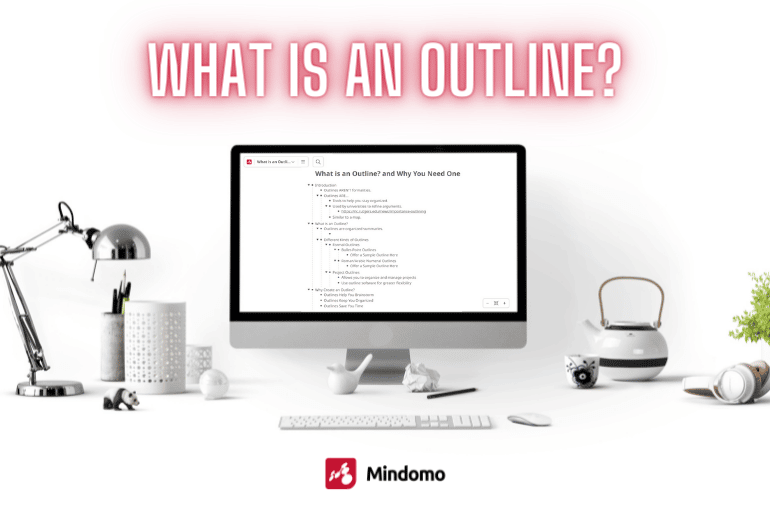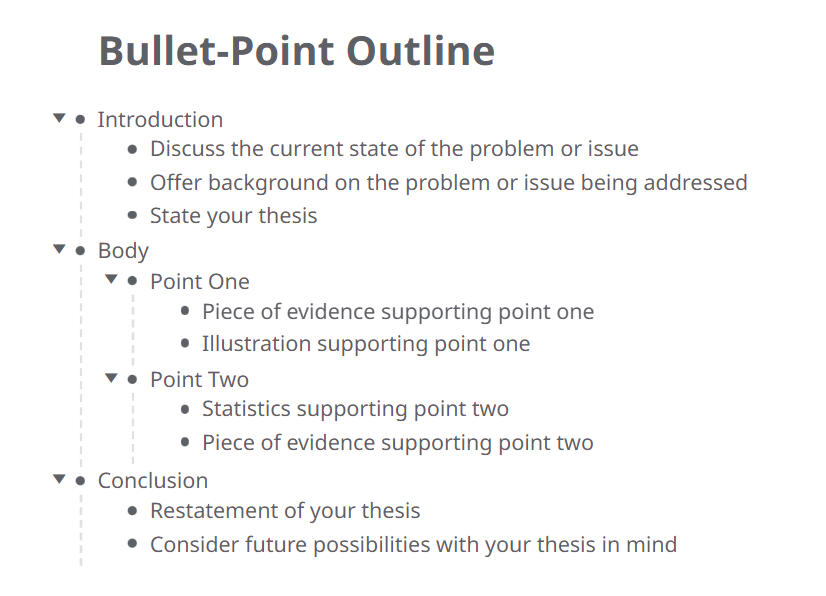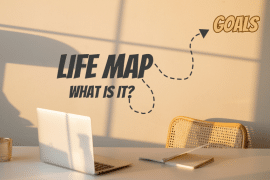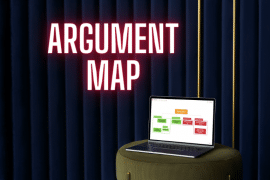
What’s an outline? It’s not just a formality, forced on you by your anal-retentive tenth-grade English teacher. It’s an essential part of any big project.
Creating an outline can help you clarify your ideas, develop a logical structure for your argument, and much more. That’s why major universities like Rutgers still teach their students to this valuable skill.
Learning the what, why, and how of outlining can help you develop a more effective research paper. Or successfully organize a multi-part project. Or turn a great concept into a best-selling novel.
With an outline in hand, you won’t just see the end goal.
Like a map, your outline will tell you where you are, where you’re going, and how to get there.
So, stop stressing out over where to go next. Instead, take this refresher on outlines and put it into practice. You may discover that an outline is just what you need to reach your destination – wherever it may be.
What is an Outline? A Working Definition
When the word ‘outline’ comes up, you may see visions of Roman and Arabic numerals dancing in your head. And while it’s true that many outlines use devices like that, they don’t have to. They can be much, much simpler.
At their most basic, outlines are nothing more than organized summaries. That’s it. They don’t require you to memorize rules or follow complicated schemes.
But just because outlines are basically summaries, it doesn’t mean they’re the same. All outlines are not created equal. That’s part of what makes them such a powerful tool.
Different Kinds of Outlines
There are dozens of ways to create effective, helpful outlines. And the way you develop them will largely depend on what you want to get out of them.
1. Formal Outlines
There’s plenty of variety to play with when it comes to outlining a paper.
You can use a formal or topical outline to structure an argument, paper, or book. Generally, they break the big idea down into individual sub-points. Then, those sub-points are supported by research, illustrations, or other evidence. In theory, you could make this kind of outline go as broadly or narrowly as you need.
Some formal outlines use simple bullets for each point. Others take advantage of Arabic and Roman numerals for a clearer structure. These kinds of outlines are particularly helpful for longer, more detailed projects.
Here’s an example of both kinds of outlines:
➤ Bullet-Point Outline
This type of outline shows each section or paragraph using bullet points to divide information.

➤ Outline Using Roman & Arabic Numerals
I. Thesis Statement
II. First Major Point
a. First Subordinate Point
b. Second Subordinate Point
i. Evidence supporting the second subordinate point
III. Second Major Point
a. First Subordinate Point
i. Evidence supporting the first subordinate point
b. Second Subordinate Point
IV. Conclusion
With these examples, you can see how an outline may be structured. Remember, though, an outline can be as detailed as needed. You can include lengthy quotes, graphs, and even videos if you’re using outline software.
The point of the outline isn’t to follow any rules. It’s to help you brainstorm, organize your thoughts, and simplify your writing process.
2. Project Outlines
Outlines aren’t just for organizing papers. You can also use them to structure projects. Whether it’s something you’re working on by yourself or a team project, outlines can be a huge help.
Use an outline to break everything down into individual steps. Then, you won’t miss the trees for the forest. And if you’re working with others, you can assign steps to individuals, add due dates, and more.
Talk about project management made simple. And all it takes is an outline.
You can create a project outline with pen and paper. But by leveraging outline software like Mindomo, you’ll be able to check off tasks, upload files, and more.
Why Create an Outline? 3 Benefits of Outlining
Hopefully, you’ve got a good handle on what outlines are and how they can be used. Now it’s time to look at a few of the biggest benefits of creating outlines.
Outlines Help You Brainstorm
When you’re face-to-face with a blank page, the pressure can be paralyzing. For example when you’re thinking about how to make an outline for an essay .
The questions filling your mind are never-ending:
How do you start? What’s your big idea? What’s the evidence holding up that big idea? How many points are you going to have? How will it all fit together?
An outline can help you beat those questions back and banish writers’ block. Start by writing down whatever main ideas come to mind. Then, as new thoughts come to mind, file them under whatever heading suits them. Before long, you won’t be staring at an empty sheet of paper anymore.
You’ll be looking at a page filled with ideas. Some will be good. Some probably won’t. But regardless, you’ll have the raw materials you need to begin putting something really effective together.
Outlines Keep You Organized
Once you’ve brainstormed, you should have a page full of ideas. And those ideas should be grouped into different categories. But that’s not all an outline is good for. It can be used to shape all those ideas into something that makes real sense.
Note how all your ideas are connected, then organize them accordingly. As you work your way through, you’ll likely find some ideas that need to be expanded on. Others will need to be eliminated. You may discover parts of the argument that are weak and need to be rethought. It’s all part of the outlining process.
Through it all, you’ll be able to keep yourself on target far more easily than if you’d chosen to fly by the seat of your pants.
Outlining software can make this part of the outlining process even easier. Mindomo allows you to brainstorm using mind maps. Then, once you’ve gotten your ideas on the screen, you can instantly turn them into an organized outline. This is a huge advantage.
And that brings us to our final benefit.
Outlines Save Time
It may seem like creating an outline would require more time than simply getting down to business. But that’s because most people overestimate their ability to get down to business.
The reality is that without an outline, you’ll waste time staring at your empty word processor. You’ll write. Then delete what you’ve written. Then write again. You’ll get down to five-hundred words only to realize that you’re completely off topic.
You will waste time.
But if you take the time to create an outline first, you’ll eliminate the waste. You won’t need to rewrite whole sections of your paper. You’ll have plotted your entire project from beginning to end before you start investing your precious time. And you (and your project) will benefit because of it.
Then, you can spend more time celebrating your successes than lamenting another rewrite.
It’s all part of the reason you should learn how to write an outline and take advantage of the outlining process.
Keep it smart, simple, and creative!
The Mindomo Team






